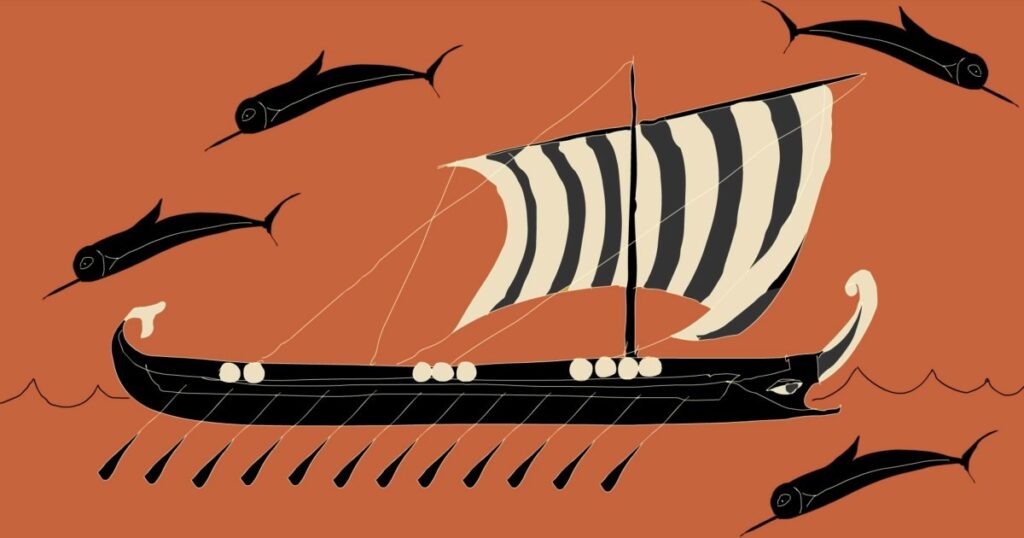Focus on the destination, not the volatility.
Nicholas (Nick) Sleep is a lesser-known investor, though is one of the most successful investors of all time. Mr. Sleep managed the Nomad Investment Partnership, alongside his business partner Qais Zakari and returned an average 18% per annum over twelve years. He delivered a 921% of total return against 117% for the MSCI World Index (from 2001 to 2013). Mr. Sleep attests his success to many principles, but one he focuses on is known as destination analysis.
“Destination analysis is consciously central to how we analyze businesses these days. It helps us ask better questions and get to a firm’s DNA.”
“The only real, long term risk, is the risk of mis-analyzing a company’s destination.”
“Our most profitable insights have come from recognizing the deep reality of some businesses, not from being more contrarian than anyone else.”
Nick Sleep
Sleep focuses on where a business is going, what is its end game, who are the managers that will get it there and what is the firm’s DNA?
Sleep believes that in times of volatility and when the environment is not conducive for investment, it is sometimes better to just do nothing. In a world where everybody always seems to need to do something, and short-term thinking is rampant, doing nothing can be iconoclastic.
“To our way of thinking the question is, what good habits and techniques ensure that the destination is secure (even if the ride is bumpy)”
“We are very conscious of the destination (U$16 after twenty years) and raising the probability of reaching the destination involves understanding the psychological mistakes…and thinking in evolutionary terms to stay ahead of the crowd. If people learn and the economy is adaptive one would expect that over time price anomalies may diminish. You might have thought people would notice!”
Nick Sleep
Sleep is keenly focused on the destination, and as mentioned in his quote above from Nomad’s December 2005 partnership letter, Sleep is explaining that the partnership’s destination is to turn $1 into $16 over 20 years (approximately 15% compounded annually). His firm and his capital’s destination was to achieve this and he set out using destination analysis in his investment thesis’. And it’s worth noting that he achieved his compounded return hurdle, but ended up hanging up the hat after twelve (12) years of compounding for more caring pursuits.
How is the Destination Analysis really applied? What does it look like? How is it formed? Destination is no excel analysis. We are not building a three-statement 5-year projection model. In fact, we are thinking longer than 5-years. We are thinking in decades. Destination Analysis seems almost esoteric and ethereal, and note it is the Elvish that have varying degrees of foresight. In Sleepy Capital’s views, if you are thinking in terms of decades, a Destination analysis focuses on understanding the following within a firm’s DNA:
- Patience: Does the management team also maintain patience as such. Does management outline its long-term goals, it’s framework. A good example is perhaps reading Gary Friedman’s, the founder and CEO of RH, investor letters over the past several years. Friedman is extremely clear on his expectation of RH’s destination.
- Creating Value: Not ony being customer centric, but also stakeholder centric. In Jeff Bezos’ letters to his shareholders, Bezos argues success in business and in life bils down to one rule: create more value than you consume. This doesn’t just mean shareholders, but also employees and stakeholders.
- Moat Maintenance: Focus on the firm’s moat, it’s competitive advantage and market leadership capabilities. Is the company continuing to innovate and expand its breadth? Is it maintaining or growing it’s moat each year? I like to invert on this one and think about Gillett, who after many years of market leadership became out of touch with its consumers and how it priced its product, resulting in an onslaught of competition.
There are various additional factors to consider, but without the above, weighing the probability of destination achievement is difficult. Perhaps the best advice is to take it from Mr. Sleep himself on some of his core tenants:
On DNA
Sleep: “The simple deep reality for many of our firms is the virtuous spiral established when companies keep costs down, margins low and in doing so share their growing scale with their customers. In the long run this will be more important in determining the destination for our firms than the distractions of the day. Jeff Bezos, founder of Amazon, made the following point in a recent interview in Wired magazine:
Bezos: “There are two ways to build a successful company. One is to work very, very hard to convince customers to pay high margins [the Colgate, Nike, Coca-Cola model alluded to above]. The other is to work very, very hard to be able to offer customers low margins [the Wal-Mart, Costco, AirAsia, Amazon, Asos model]. They both work. We’re firmly in the second camp. It’s difficult – you have to eliminate defects and be very efficient. But it’s also a point of view. We’d rather have a very large customer base and low margins than a small customer base and higher margins.””
Nick Sleep quoting Jeff Bezos
On Patience
“We can all do momentum investing, but it is emotional investing and I just don’t think it is that intelligent or profitable. Good investing is a minority sport, which means in order to earn returns better than everyone else, one needs to be doing things differently from the crowd. And one of the things that the crowd is not, is patient.”
“At the beginning of the AGM of the Berkshire Hathaway Company they show this little video and each year Buffett is asked what’s the main difference between himself and the average investor, and he answers patience. And there is so little of it these days. Has anyone heard of getting rich slowly?”
“Good investing is a minority sport, which means that in order to earn returns better than everyone else we need to be doing things different to the crowd. And one of the things the crowd is not, is patient.
On Learning
“Wordly wisdom is a good phrase for the intellectual capital with which investment decisions are made and, at the end of the day, it is the source of any superior investment results that we may enjoy.”
“There is a philosophical argument that a mistake is only a mistake if you call it so. Otherwise, it is a learning opportunity. That seems like the right spirit to us. In investment terms, once lessons have been learnt, mistakes can be put on the price-earnings ratio of one and the resultant good behaviour on a ratio of more than one. In other words, mistakes become net present value positive,” he says.
On Inverting
“Let’s invert for a moment: when we think of our investee companies, the firms which we would quite happily own with no word from them for years are those businesses in which we have the highest confidence of reaching a favourable destination: they are the firms we think we know will work.
“One trick to see the world more clearly is to invert situations. A newspaper headline claiming one third of the population wants something, also tells you two-thirds don’t!”
There is much to learn from Sleep’s process and this article only covers a few of his core tenants. There are 12 years of investor letters that can be found online. While Sleep’s investment track record is astounding, perhaps one thing we must all take away from Sleep’s investment pursuits was his ability to determine his own destination was not to manage an investment fund for life. Mr. Sleep and Qais Zakari earned over $2 billion for their clients. After this success, determining to close his fund after twelve years could not be an easy decision. We can only assume Sleep’s investment journey was a small portion in his own life’s destination analysis.






No comment yet, add your voice below!